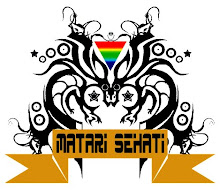Lesbian Herstory
16.18 Posted In lesbian Edit This 0 Comments »
by. http://www.lesbianherstoryarchives.org/history.html

Later in 1974, a larger group of women started meeting on a regular basis to work out the deeper vision of this undertaking. One of the first tasks the group undertook was to send off a news release to all of the then existing lesbian, feminist and gay publications announcing the groundbreaking undertaking. This was a testing of the waters, to see if the community shared in our vision. The answer was "yes", and in the next year, 1975, LHA published its first free newsletter. In the same year, the Archives found its home for the next 15 years in Joan Nestle's Upper West Side Manhattan apartment on 92nd St. Deborah Edel and Joan shared these years with the Archives in this home. And so did thousands of volunteers and visitors. Deb and Joan agreed that the first ten years of the Archives would be to build the trust of the communities it was serving. They were determined to keep all of the services of the Archives free, to not seek government funding, and to build grassroots support for the project. To accomplish this, Deb and Joan had carried around early journal issues, photographs, letters, and so on, in shopping bags, speaking to whomever invited them. The venues ranged from living rooms where all present were sworn to secrecy, to women's festivals, gay church and synagogue gatherings, classrooms and bars.
By the late 1970s, to save wear and tear on the more fragile artifacts, they created the Archives' slide show. The slide show meant they could demonstrate the history of the Archives and raise issues about the challenges facing a Lesbian Archives and Lesbian history work in general, while making appeals for more materials. The main point of the slide show was to turn shame into a sense of cherished history, to change the meaning of history to include every woman who had the courage to touch another woman, whether for a night or a lifetime. "To change deprivation into cultural plentitude" as Joan said in hundreds of tours she gave in the apartment of the overflowing collection. A version of the slideshow still exists today, custom fitted to whomever is showing it. In 1978, Judith Schwarz, a pioneering grassroots Lesbian historian, joined the collective, bringing with her all her skills in information organizing. Georgia Brooks, a tireless activist in the New Jersey and New York communities, also joined. Georgia launched the first Black Lesbian Studies group at the Archives, which held its meetings around the famous French peasant dining room table that we bought for $30 on Atlantic Avenue in Brooklyn in 1973. It is now back in Brooklyn in our permanent home.
One other person closely connected with the Archives until her death was Mabel Hampton, (1902-1986), a woman who had lived her long life in the African-American Lesbian community. Mabel donated her extensive collection of 1950s lesbian paperbacks and often came to volunteer nights. From the earliest days of the Archives, one night a week was devoted to volunteers working with the collection -groups of very different women spread out over the whole apartment filing, sorting, cataloguing, and opening mail. Many women came to volunteer nights just to hear Mabel tell her tales of drag balls in Harlem and her version of the wild parties of the Harlem Renaissance. In the mid-1980s when we realized we needed to find a larger home for the Archives and to spread the responsibility for the now huge collection, we created a Coordinating Committee that spearheaded a concerted fundraising drive so we could purchase a building for the collection. We purchased our new home, in Park Slope, Brooklyn, in 1990 and officially opened it in June 1993. The bank was dubious about taking a risk on our non-hierarchical collective with no guaranteed source of income, but we raised the money to pay back the bank in record time. That trust we had talked about building in 1974 was there when we - all of us -needed it.






0 comments:
Posting Komentar